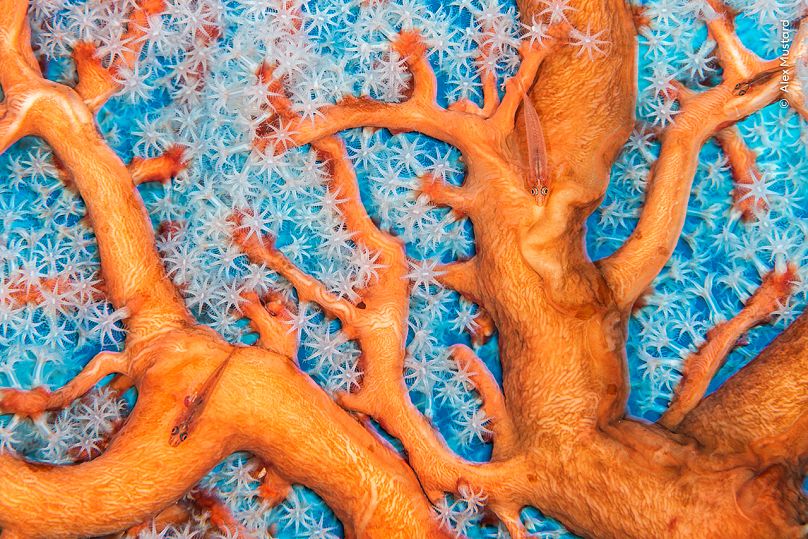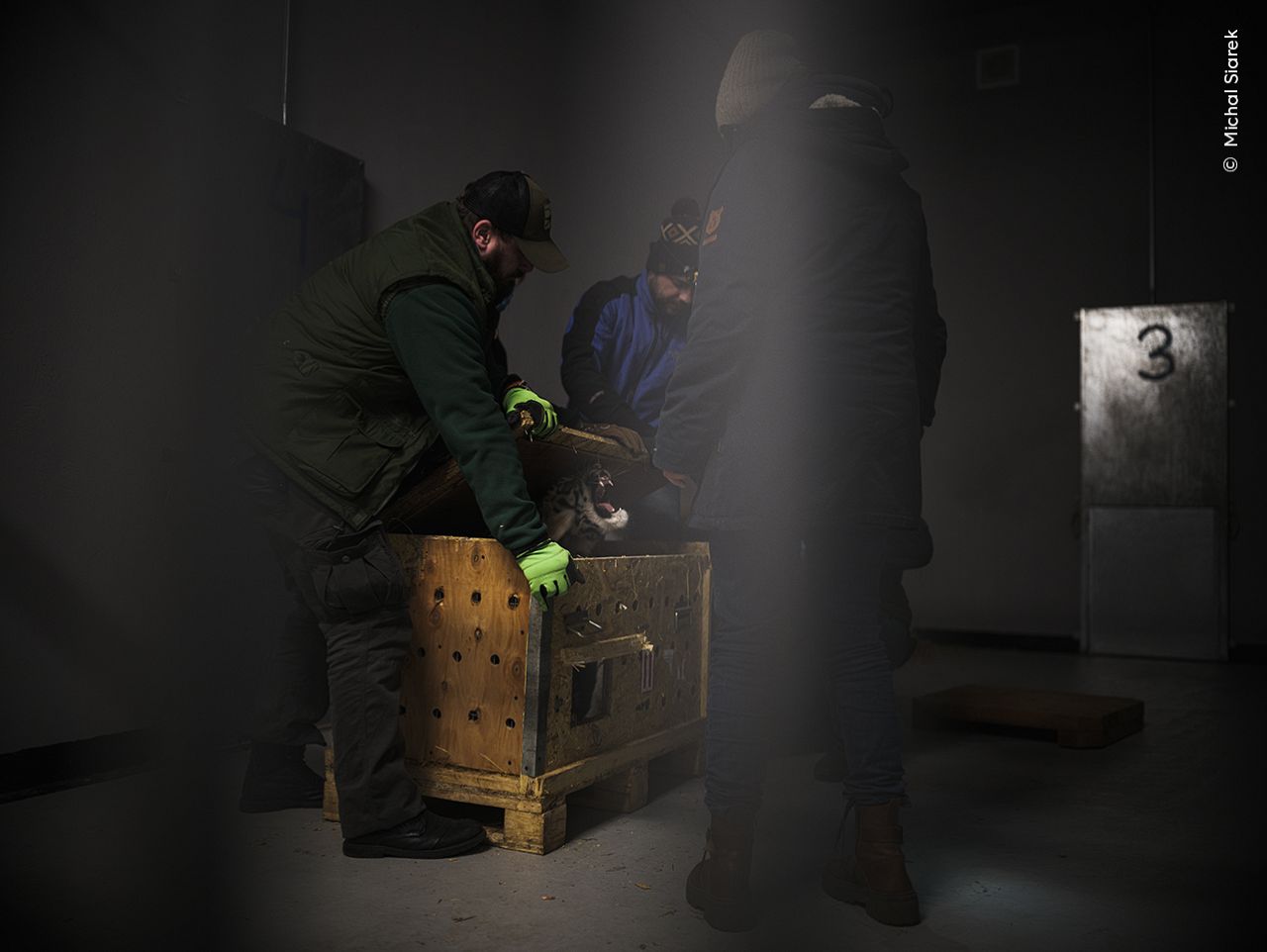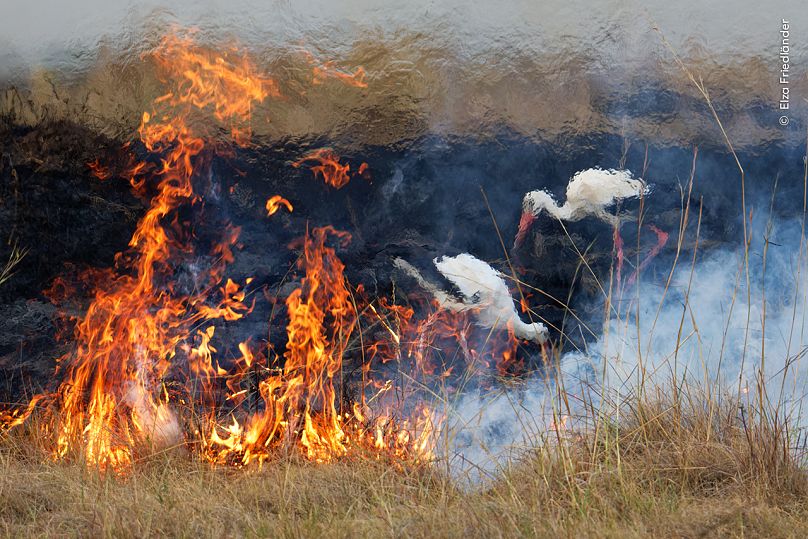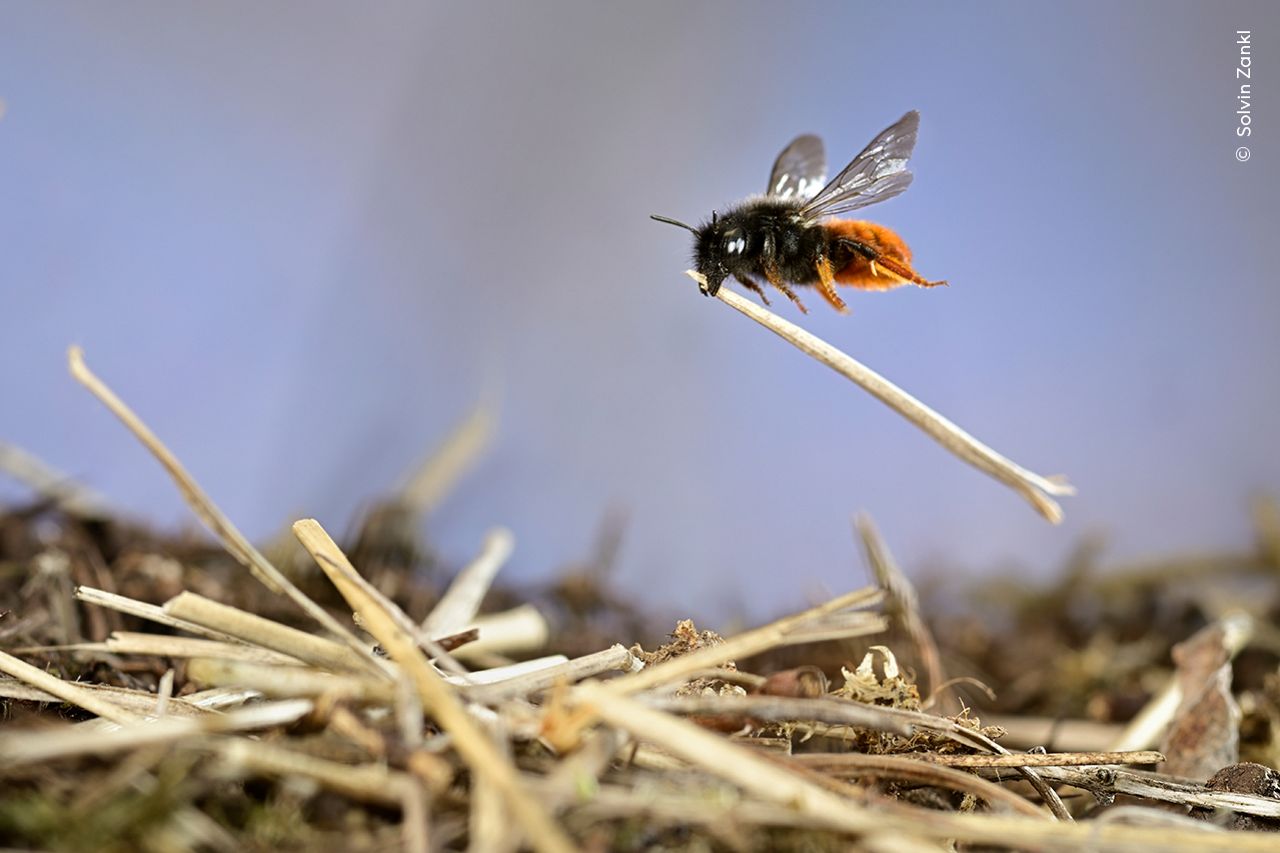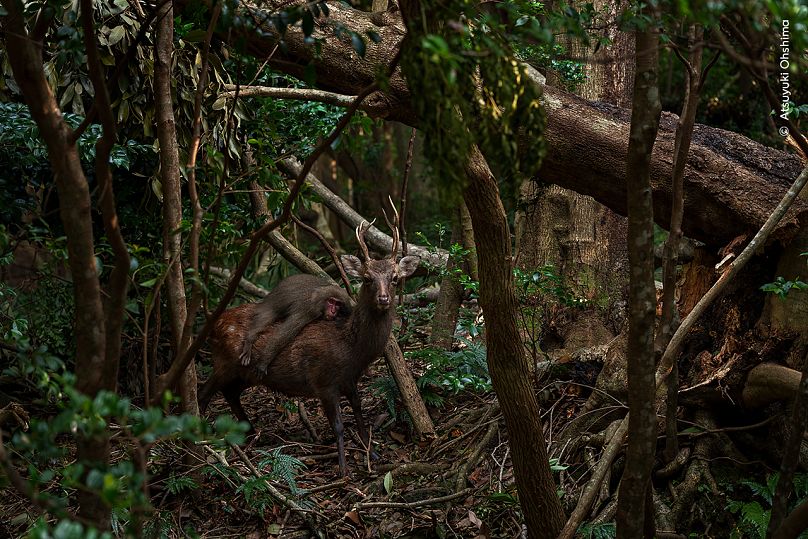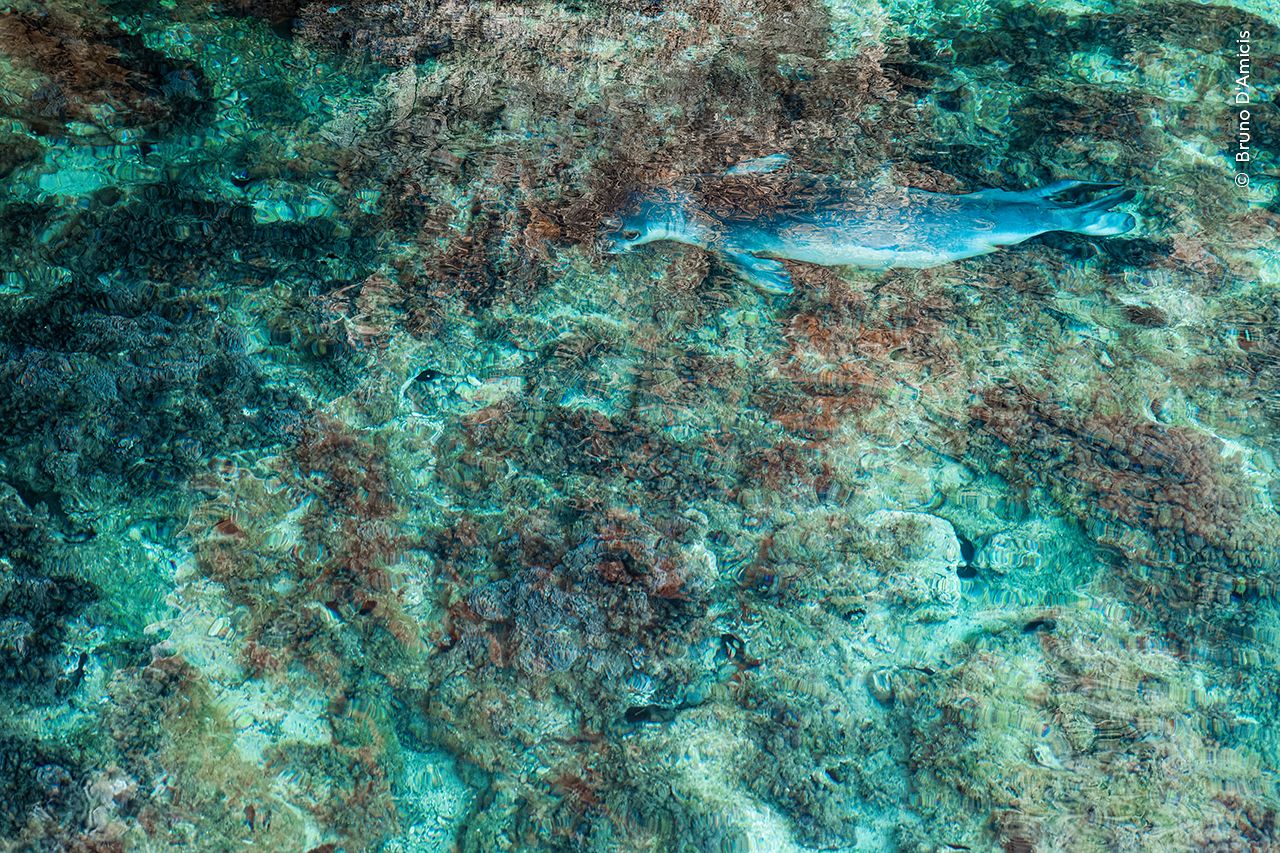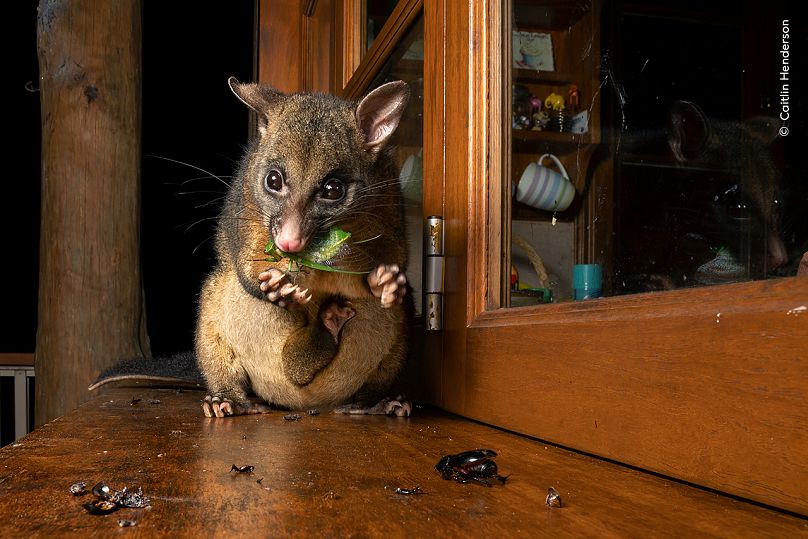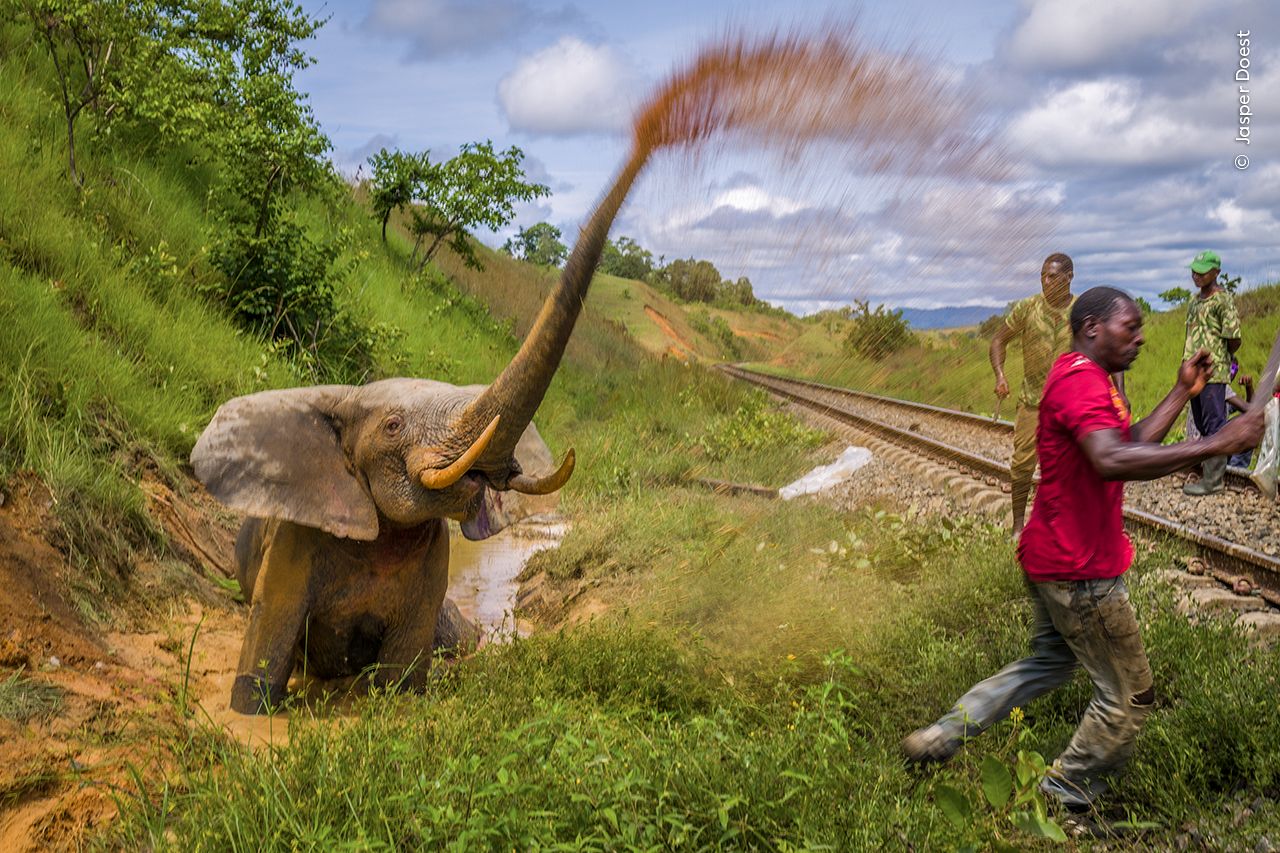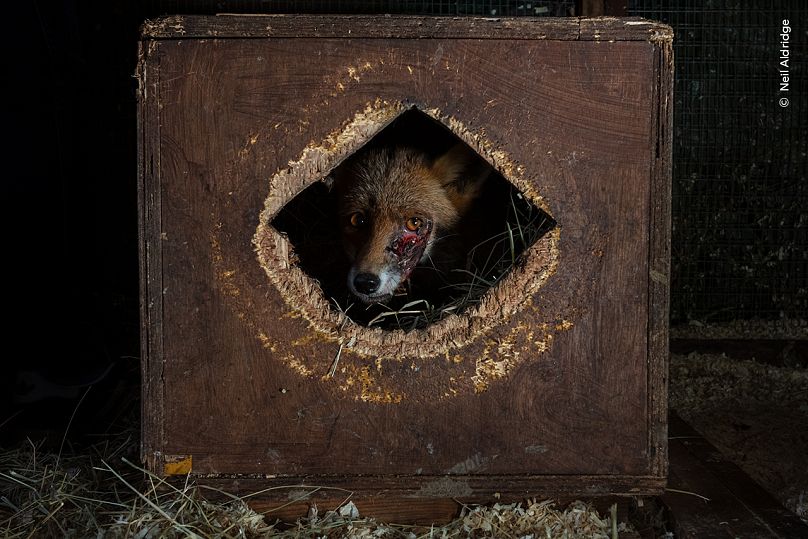Hidden seals, forest rodeos, busy bees: A sneak peek at 2023’s Wildlife Photographer of the Year
These images are some of the highly commended shots from almost 50,000 entries.
A tiger cub evacuated from Ukraine, a healthy coral reef and a forest rodeo are just some of the images featured in this year's Wildlife Photographer of the Year competition.
There have been an incredible 49,957 entries from photographers of all ages across 95 different countries. They were judged by a panel of industry experts from around the world.
Wildlife Photographer of the Year is developed and produced by the Natural History Museum, London. On 13 October, it will showcase 100 of these extraordinary photos at an exhibition at the museum.
Here is a sneak peek at some of this year's most highly commended images.
Coral reefs support a network of interconnected species that are at risk due to climate change. In this photo, British photographer Alex Mustard shows the biodiversity of a healthy reef in Lembeh Strait, North Sulawesi, Indonesia.
Alex is particularly fond of gobies, a species of fish that are usually skittish. But, the photographer was able to capture a couple in this frame alongside the vibrant colours of Gorgonian sea fans that they use as a refuge or feeding platform.
Michał Siarek records the moment that a team from Poznań Zoo in Poland opened a crate to check on a tiger cub evacuated from Ukraine. The Polish photographer documented efforts to rescue privately owned wild animals such as big cats from Ukraine due to Russia's invasion.
"That night changed me," he says. "Hearing the cry of a lion still in the truck made me decide to help with the next evacuation run."
Many of the animals were rescued from fighting hotspots in eastern Ukraine in 2022. They were rushed to the border, then to Poznań Zoo and finally to the sanctuaries across Europe. Since then, more than 200 animals have been saved.
German photographer Elza Friedländer shows a pair of white storks in shimmering heat against the burnt ground caused by a controlled fire at Rhino Ridge in the Maasai Mara National Reserve, Kenya. Hundreds of birds rush to the front line of the blaze in search of easy prey.
Starting controlled fires is a common way of managing grassland to stimulate new growth. But it is controversial and can be a dangerous tactic - especially during drought conditions when the flames can easily spread.
Photographer Solvin Zankl carefully watched this two-coloured mason bee build the roof of its nest near Witzenhausen in Hesse, Germany. The bee memorises landmarks nearby in order to find its way back to the right location.
After two hours of edging his equipment closer to the nest, the tiny creature started using the German photographer's camera as one of these landmarks.
Two-coloured mason bees lay their eggs in snail shells, packing them with pollen and nectar to feed their larvae. They then seal it with grass and sticky saliva. Though humans often consider snails a pest, this species wouldn't survive without them.
Atsuyuki Ohshima captured this unusual interaction in Yakushima, Kagoshima, Japan.
A sudden movement behind the sika stag caught the Japanese photographer's eye. Using a nearby tree as a springboard, a young Yakushima macaque jumped on the deer's back.
Rodeo-style riding of deer by the island's monkeys is rare, but not unheard of. Young males sometimes attempt to mate with them but this macaque was female and appeared to simply be enjoying the free ride.
Historic hunting and human encroachment on its habitat have made the monk seal one of the most endangered mammals on Earth. Working with a permit, Italian photographer Bruno D’Amicis lay hidden on a ledge for hours to capture this shot in Greece.
The animal glided through the shallows before disappearing into the cave below. Monk seals once rested openly on beaches but have now become elusive, preferring to seek safety in secluded areas.
Caitlin Henderson found this unexpected guest on her balcony in Malanda, Queensland Australia. Carrying a baby in its pouch, the common brushtail possum is hungrily dismembering a large northern greengrocer cicada.
"There were heads here, wings there," the Australian photographer explains.
This nocturnal marsupial is native to Australia and can be found across the country. Its long sharp claws are made for climbing trees but it has adapted to urban environments, often coming into conflict with humans.
Jasper Doest's photo paints the tragic picture of an elephant's final moments after being hit by a train in Lopé National Park, Gabon. Its hip bone was shattered beyond repair and the creature was in such extreme distress that it had to be killed.
The Dutch photographer witnessed the episode while in the park on other business.
Trains transport manganese from the country's Moanda mine which holds a quarter of the world's known reserves of this metal. Regular collisions with wildlife happen in the national park including around 20 incidents with elephants each year.
The park director has attempted to get the rail company to slow down the trains with little success.
It has been illegal to poison, block or destroy foxholes or hunt foxes with dogs in England and Wales since 2005. Neil Aldrige highlights the injuries of this fox - most likely caused by dogs - found in Kent, UK.
The South African photographer has spent nine years working on a project to document the complex relationship between the British people and the red fox. As it peers out from a makeshift den at a rehabilitation centre, Neil frames the fox's permanently exposed teeth and wounded eye.
The injuries this animal suffered were likely inflicted by dogs sent illegally to flush it from its den.











